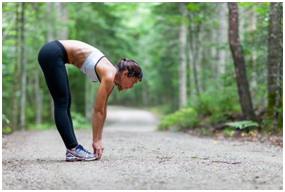Types of Stretching
Dynamic StretchingThis stretching technique suggest exactly what it says. It is stretching a limb throughout its range of motion with movement in order to reach its fullest potential. During dynamic stretching it does not ask for bouncing or a jerking motion. An example of this would be to swing your leg and let it naturally reach its full potential.
Why Use Dynamic Stretching?
This technique has been proven to improve the readiness of your muscles before exercise. Dynamic stretching is done before physical activity to ensure your muscle are ready to contact and move freely.
Static Stretching
This method of stretching is the complete opposite of Dynamic. Static stretching requires you to hold your stretch for a prolonged period of time. Typically 30-90 seconds depending on how tight the muscle is. While stretching you want to be controlled with little movement, bouncing during these stretches can cause injury. An example of this method would be to touch your toes and hold.
Why Use Static Stretching?
Static stretching is done after being physically active. This relaxes the muscles after being active to prepare the body for recovery. Static stretching will ultimately increase your flexibility and range of motion.

